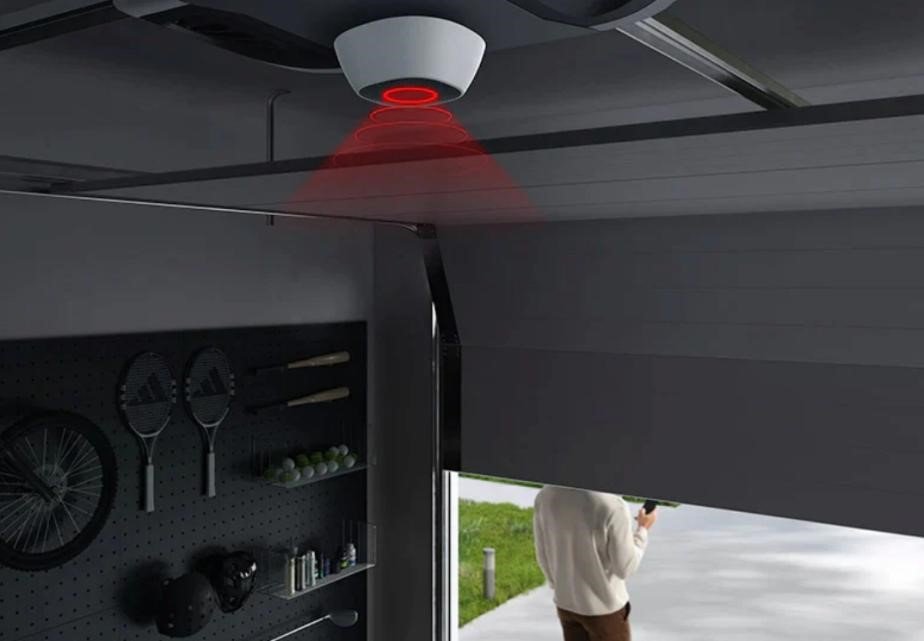
Common Methods to Bypass Garage Door Sensors Explained
Garage door sensors play an essential role in modern safety systems, preventing accidents and potential damage. However, malfunctioning sensors can disrupt your daily routine, leaving you frustrated. Understanding how to bypass garage door sensors can be beneficial in emergencies or when troubleshooting specific issues. This guide covers everything you need to know about the function of garage door sensors, the safety risks involved in bypassing them, common bypass methods, and the importance of maintaining sensor functionality. We will also explore safer alternatives that you can consider to enhance your garage’s safety while avoiding permanent damage or legal risks.
What Are Garage Door Sensors and Their Purpose?
How Do Garage Door Sensors Function?
Garage door sensors are small but vital safety devices located near the bottom of the garage door’s frame. Typically, these sensors are positioned about 6 inches off the ground on both sides of the garage door. They work by emitting an invisible infrared beam between them. When the beam is intact, the garage door can close properly. However, if any object—such as a child, pet, or vehicle—interrupts this beam, the sensors immediately signal the garage door opener to stop the door from closing and reverse its direction. This safety mechanism is designed to prevent accidents and ensure that no harm comes to people, pets, or property.
Why Are Safety Features Crucial for Garage Doors?
Safety features like garage door sensors are not just optional conveniences; they are essential to keeping your household safe. Without these features, your garage door could close with considerable force on an object, pet, or person, resulting in serious injuries or damage. This risk is especially pronounced in homes with young children or pets, who might unknowingly wander under the door while it’s closing. Garage door sensors ensure that the door halts immediately when the beam is broken, minimizing the chance of accidental injury. By incorporating these features, garage door manufacturers aim to reduce the risk of accidents and increase the overall safety of home environments.
Common Problems Faced with Garage Door Sensors
Garage door sensors, though effective, can sometimes malfunction due to several common issues. One of the most frequent problems is dirt or dust accumulating on the sensor lenses, obstructing the infrared beam. Another common issue is misalignment, where one or both sensors become slightly shifted from their proper position, disrupting the connection between them. Wiring issues, such as frayed or disconnected cables, can also lead to malfunctions. These problems can prevent the door from closing properly, creating an inconvenience and possibly leading to safety hazards if left unresolved. Regular cleaning and inspection can help prevent these issues.
Are Bypassing Garage Door Sensors Safe?
What Risks Are Involved in Bypassing Sensors?
Bypassing garage door sensors comes with significant risks. When you bypass these safety devices, the automatic reversal function is disabled, meaning the door will close regardless of whether an obstruction is present. This increases the chance of injury to children, pets, or even adults, not to mention potential damage to your vehicle or other belongings in the garage. Additionally, if an accident occurs due to a bypassed sensor, the homeowner may face legal liability, especially if the malfunctioning safety feature leads to personal injury. Therefore, bypassing the sensors should only be considered as a temporary measure in emergencies, not a long-term solution.

How Can Bypassing Affect Your Garage Door System?
Disabling the sensors may cause other issues with your garage door system. Since the sensors are designed to protect the door from closing improperly, bypassing them can lead to additional wear and tear on the garage door opener and related components. The door may experience misalignment or other operational problems that can further degrade the system over time. The more often the door operates without its safety features in place, the greater the likelihood of damaging the motor or other parts, resulting in costly repairs or even the need for a full system replacement down the road.
Are There Temporary Solutions to Bypass Sensors?
While bypassing the sensors is not recommended for long-term use, there are temporary solutions available. Most modern garage door openers come equipped with a manual override feature that allows you to operate the door without relying on the sensors. This option should only be used in emergencies when the sensors are malfunctioning and you need to get the door open or closed. After using the manual override, you should schedule repairs as soon as possible to restore normal sensor functionality. These temporary solutions offer a way to handle sensor issues while ensuring that long-term safety is not compromised.
Common Methods for Bypassing Garage Door Sensors
Manual Override: How to Use It Properly
Most garage doors are equipped with a manual override feature, designed for emergencies or sensor malfunctions. This feature typically comes in the form of a red cord or rope hanging from the garage door opener mechanism. When you pull this cord, it disengages the door from the automatic opener, allowing you to manually lift and lower the door. This can be useful during a power outage or if the sensors fail. However, after manually operating the door, it’s important to re-engage the opener by pulling the cord again so the door can function automatically. Always ensure the door is balanced properly to avoid injury during manual operation.
Adjusting Sensor Alignment: Step-by-Step Guide
One of the most common sensor issues is misalignment, which can easily be corrected without professional help. First, inspect the sensors to see if the LED indicator lights are solid or blinking. If one or both are blinking, this usually indicates misalignment. Start by cleaning the sensor lenses with a soft cloth to remove any dust or debris. Then, loosen the screws that secure the sensors in place, making small adjustments to their position until both LED lights are solid, indicating proper alignment. Tighten the screws back once alignment is restored, and test the garage door to ensure it’s functioning correctly.
Using Remote Controls as Bypass Options
Many modern garage door openers feature a sensor bypass option built into the remote control. If your sensors are malfunctioning but you still need to close the door, pressing and holding the remote’s close button may allow the door to close without the sensors engaged. This method temporarily overrides the sensor system, but it should not be used as a permanent fix. It’s important to note that this is a short-term solution to a sensor problem and should only be used in emergencies or when no other immediate options are available. Proper sensor repairs should be scheduled to maintain long-term safety.
What to Do If Bypassing Doesn’t Work?
When to Seek Professional Help for Repairs?
If bypassing methods such as the manual override or sensor realignment don’t resolve the issue, it’s time to seek professional help. A garage door technician will be able to diagnose more complex problems, such as wiring issues, faulty sensor units, or mechanical failures within the door opener itself. Professional repair services can ensure that the problem is addressed thoroughly and safely, restoring your garage door to full functionality. Trying to fix advanced problems on your own can lead to further damage, so it’s best to leave complex repairs to experts who understand the system’s intricacies.
What Maintenance Can Prevent Sensor Issues?
Preventive maintenance is key to avoiding garage door sensor problems. Regularly inspect the sensors for dirt or debris that could block the infrared beam. Clean the lenses gently with a microfiber cloth to ensure they remain clear. Additionally, check that the sensors are properly aligned and that no objects are obstructing the beam’s path. It’s also a good idea to schedule routine inspections and tune-ups for your entire garage door system, as a professional can catch small issues before they become larger problems. Regular maintenance helps keep all components working smoothly, reducing the likelihood of sensor malfunctions.
Are There Alternatives to Bypassing Sensors?
Instead of bypassing malfunctioning sensors, consider upgrading your garage door system. Many newer garage doors come with enhanced sensors or additional safety features, such as an auto-stop sensor that detects objects in the door’s path even more accurately. Upgrading your sensors can provide better accuracy and reduce the need for frequent troubleshooting or bypassing. Other alternatives include adding supplementary safety features, such as motion sensors or smart garage door systems that provide better control and monitoring of your garage door’s operations. These options can offer a long-term solution to improve your garage’s safety and functionality.
Conclusion
Garage door sensors are vital components of your home’s safety system. While it may be necessary to bypass them temporarily in certain situations, it’s important to understand the risks involved and to treat such measures as short-term fixes. Regular maintenance, prompt repairs, and professional help when needed are essential to ensuring the ongoing safety of your garage door system. If sensor issues become frequent, consider upgrading your system for better reliability and security. Keeping your sensors and garage door system in good working condition not only protects your family and property but also ensures peace of mind in your daily life.




